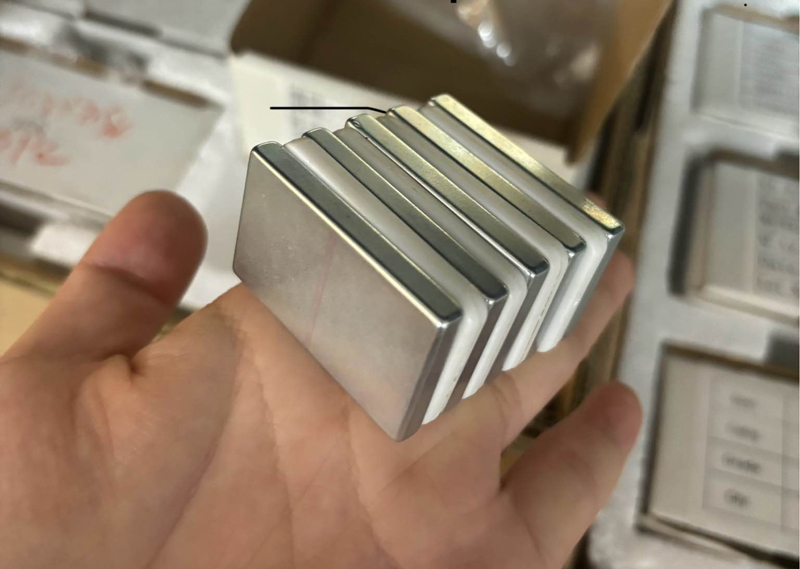There are too many questions about neodymium magnets, we will slowly update you later, today's update is to give neodymium magnets electrified what will be the effect of demagnetization, whether the question of demagnetization.
In the article “What types of permanent magnets can conduct electricity?” has introduced, neodymium magnets in fact can conduct electricity, only the conductivity is very low, we can see from its conductivity coefficient of 0.6 x 106S/m can also be seen, although it is very low, but it is in the permanent magnets also belongs to the conductivity of the material, the higher. Surface coating is also conductive metal materials, such as galvanized, nickel-plated.
The accompanying picture is a rectangular block neodymium magnet

If a direct current is applied to a neodymium magnet, a toroidal magnetic field is produced. The current is usually not large enough to have almost no effect on the magnetic field of the permanent magnet itself. Simple estimation, a DC wire with a current of 1A, the magnetic field strength generated at 1mm from the wire is about 10-4 Tesla, which is about 3 orders of magnitude smaller than the magnetic field strength of a general permanent magnet, and therefore has very little effect on the original magnetic field of the permanent magnet. The effect of the current-generated magnetic field on the original magnetic field is related to the measurement position, magnet shape, direction of original magnetization, and direction of current loading. Overall, at a certain magnetic field strength measurement point, if the current-generated toroidal magnetic field and the original magnetic field magnetization direction are the same, the superimposed magnetic field strength increases, which may change the direction of the magnetic domains so that the original magnetic field increases (when the permanent magnet is not fully magnetized), and the direction is not the same, which will cause the magnetic field strength to weaken. Additionally, loading current causes an increase in temperature, which may demagnetize the permanent magnet.
If the addition is alternating current, then eddy currents can be generated in the permanent magnet due to the alternating magnetic field produced. For example, in a NdFeB permanent magnet synchronous motor, the eddy current loss in a permanent magnet synchronous rotor with a diameter of 100 mm can typically reach 10-2 to 102 watts. Due to the low conductivity and small temperature coefficient of neodymium magnets, it is easy to cause motor performance degradation due to temperature rise, and even the risk of demagnetization. In addition, loaded alternating current will also have electromagnetic damping and skin effect in some applications.
The above is about energizing neodymium magnets, focus on Magnets FAQ, take you to know more about magnets.
Editor's Recommended Reading;
 China Neodymium And Ferrite Magnets Manufacturer & Supplier
China Neodymium And Ferrite Magnets Manufacturer & Supplier 


